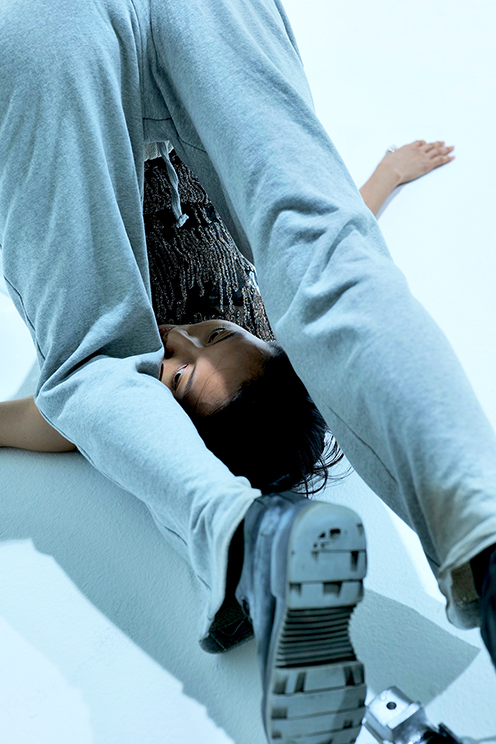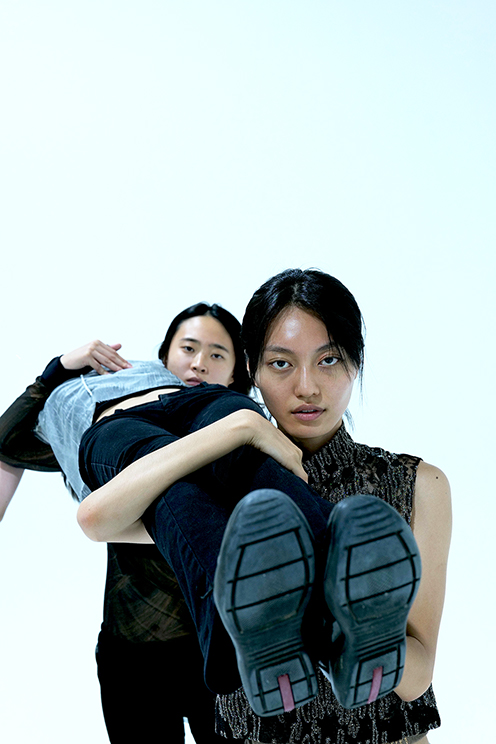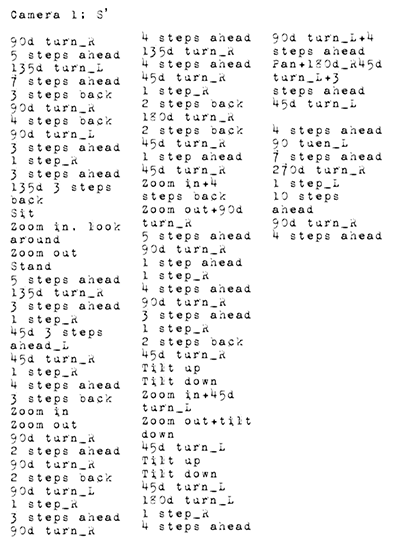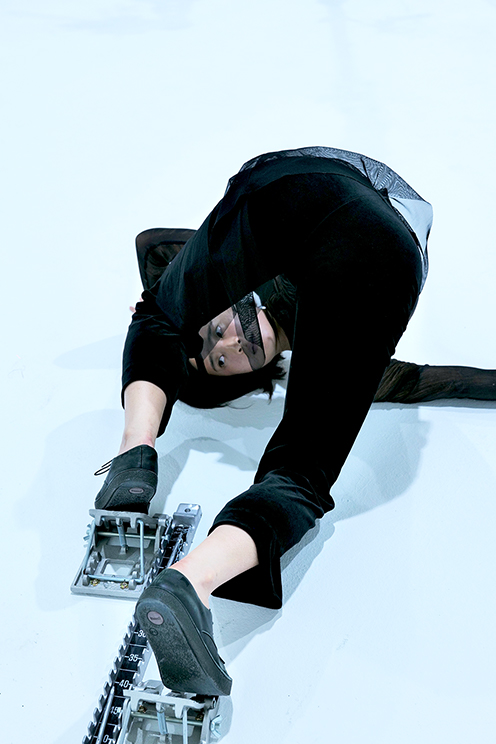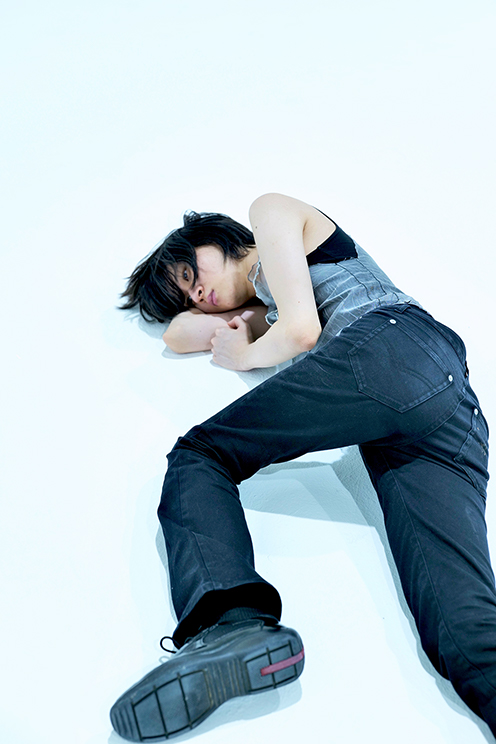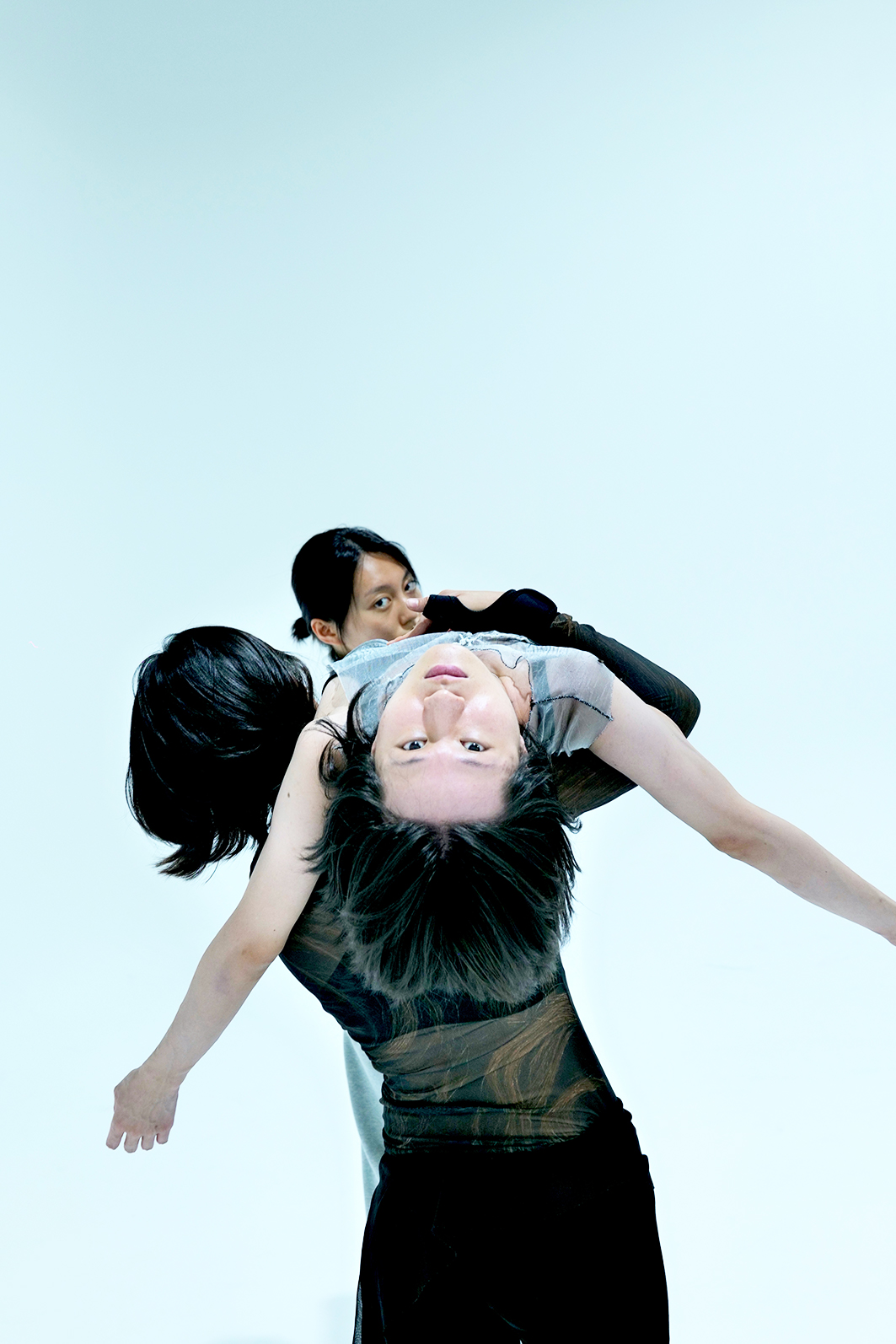The cameraperson learns the body’s trajectory of an exhibition designed with the audience’s movements in mind. She then reenacts this predetermined flow in the horizon studio, a seamless, concave surface which lacks horizontal and vertical axes. She has walked the exhibition frequently and again, though she will not shoot there. Instead, the premise of this performance is to capture the choreography of a memory acquired in a place familiar in one that is unfamiliar, unpracticed. As a performer, the cameraperson’s trial is to confront the architectural elements of the exhibition space equipped only with her gaze. Walking and looking in a place surrounded by walls permanent and those temporarily erected, filled with the markings of nails once hammered, she later mediates this space with one that lacks obstacles, a place in which one’s sense of location becomes unclear. The cameraperson assumes a body that has memorized the architecture and human scale of the exhibition through the discipline of rehearsal. This choreography becomes the camera of the first shot, vested in body and memory. Its counterpoint, the second—that of the jimmy jib—is freed from constraints of muscle and gravity, deriving its movements from the often geometric and inorganic camera pans of horror movies.
The performers pursue the cameras’ scrutiny, reversing the typical relationship in which the machine dutifully tracks its subjects. Here, the camera of the first shot abandons tradition and averts its gaze at the peak of an important moment, moving instead in the direction of its memory. A bird drone intrudes between lens and body in the axis-less space, fluttering its wings in neglected futility. The performers (who continue to chase the lens that pays them no mind) assume a schizophrenic dimension of acting, reminiscent of the singer who must deliver an affective performance while mechanically lip-syncing in a music video—all the while maintaining eye contact with the lens and severing any semblance of immersive acting. The performers wonder of the camera: What does it see in ‘me?’ Keeping in mind these moving thoughts and the steps/eyes/screen from which they are so estranged, to what extent can the documentation of a performance trust and betray its performers? The choreography assumes a camera, the performers are stripped of their central role, and they enact the same movements in an empty repetition. They endure in one, combined gesture the starting movements of a track race and a diving match, and split into two the singular role of the ballerino. This, they repeat. Turning lenses and chasing eyes call to mind the principle that machines and bodies may in fact be reflections of one another. A bruised body reveals the speed at which many things went wrong.
*A shape-memory alloy is an alloy that can be deformed when cold but returns to its pre-deformed (‘remembered’) shape when heated. It may also be called memory metal, memory alloy, smart metal, smart alloy, or muscle wire.Wikipedia
website: www.kula2020.com
이 영상에서는 촬영자가 관객의 동선을 염두에 두고 설계되는 공간(전시 공간)에서 익힌 몸의 궤적을 단일한 시선을 위해 조성된 공간인 사진 촬영 스튜디오(호라이즌 스튜디오)로 옮겨 재연한다. 퍼포머로서 촬영자의 임무는 건축적 요소를 자신의 시선으로 대면하고 안무화하는 것이다. 벽과 가벽으로 둘러싸여 있고 못자국이 가득한 곳에서 걷고 바라본 경험을 부딪힐 곳이 없고 위치 감각이 불분명해지는 공간으로 매개하면서, 촬영자는 앞선 공간의 건축과 휴먼스케일을 리허설로 안무화시킨 몸이 된다. 여기서 그가 겪는 것이 첫 번째 촬영이 된다. 첫 번째 촬영이 기억과 신체에 귀속된 촬영이라면, 두 번째 촬영은 근육과 중력의 제약이 제거된 촬영이자 앞선 촬영의 대척점으로 호러무비에서 자주 등장하는 도형적이고 비유기적인 무빙에서 파생한다. 퍼포머들은 각각의 능동적인 움직임보다 카메라를 쫓는다. 카메라가 그들을 따라가는 게 아니라 역전된 공연은 늘 중요한 순간에 대상으로부터 시선을 거두고 미리 외워진 방향으로 나아간다. 이곳에 버드 드론이 수직 수평의 구분이 사라진 렌즈, 몸 사이에 난입한다. 다른 움직임은 신경쓰지 못하는 렌즈를 쫓으며 퍼포머들은, 마치 뮤직비디오에서 감정 연기를 하며 렌즈와 눈을 맞추는 것, 몰입과 기계적인 립싱크를 동시에 해야 하는 가수가 당면하는 분열적인 연기의 차원처럼, 카메라가 “날” 어떻게 보고 있는지 자꾸 생각한다. 움직이는 그 생각들과 자꾸 어긋나는 걸음—눈동자—화면의 모습에서, 퍼포먼스 기록 촬영은 어디까지 퍼포머들을 믿고 배반할 수 있을까? 안무가 카메라가 될 때, 역할을 빼앗긴 퍼포머는 카메라를 의식하며, 같은 움직임을 반복한다. 그들은 육상 경기의 스타팅 블럭과 스포츠 다이빙에서 다이빙 보드를 하나의 몸짓에서 겪고, 고전 발레의 리프팅에서 발레리노의 몸짓을 두 명으로 쪼개어 반복한다. 돌아서는 렌즈와 쫓아가는 눈동자가 기계와 신체가 서로를 반사하는 원리와 닮아갈 때, 멍든 몸은 많은 것이 어긋났던 속도를 드러낸다.
